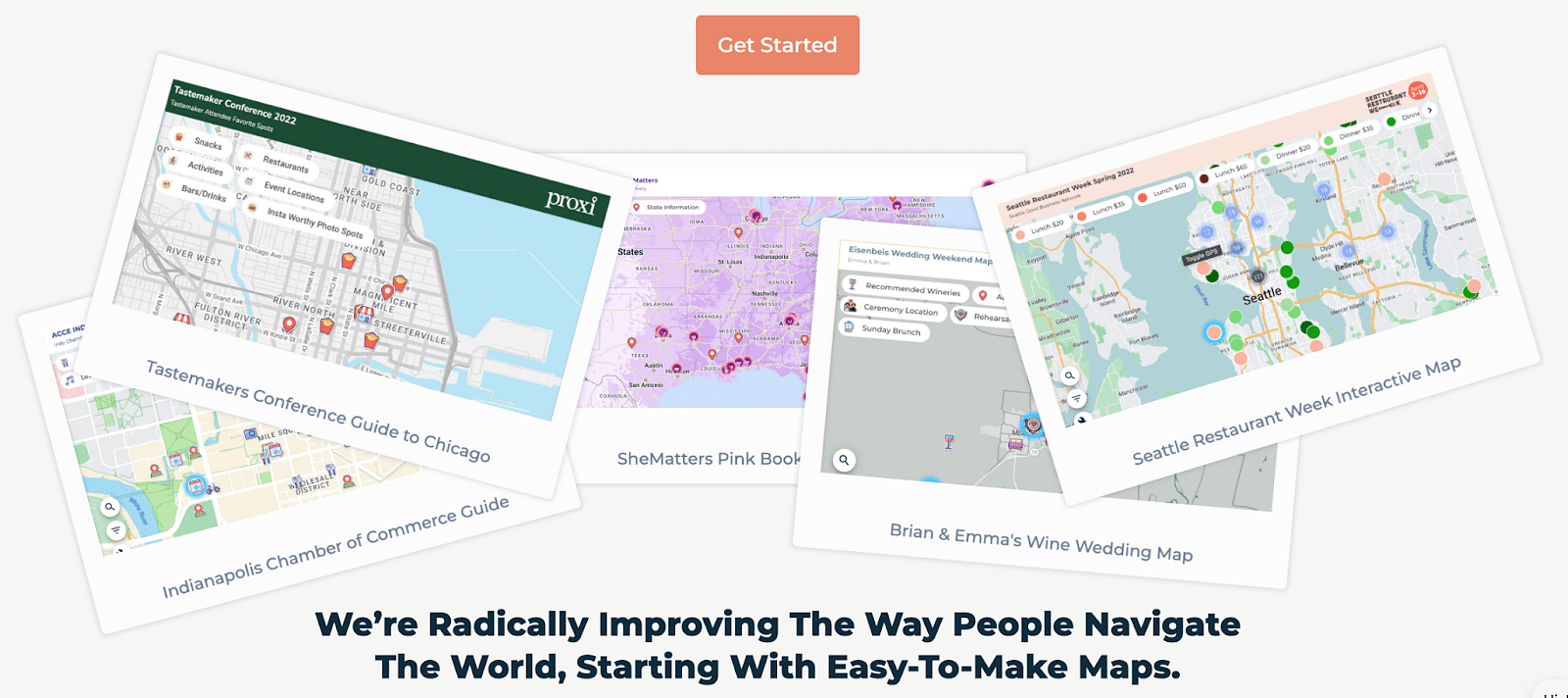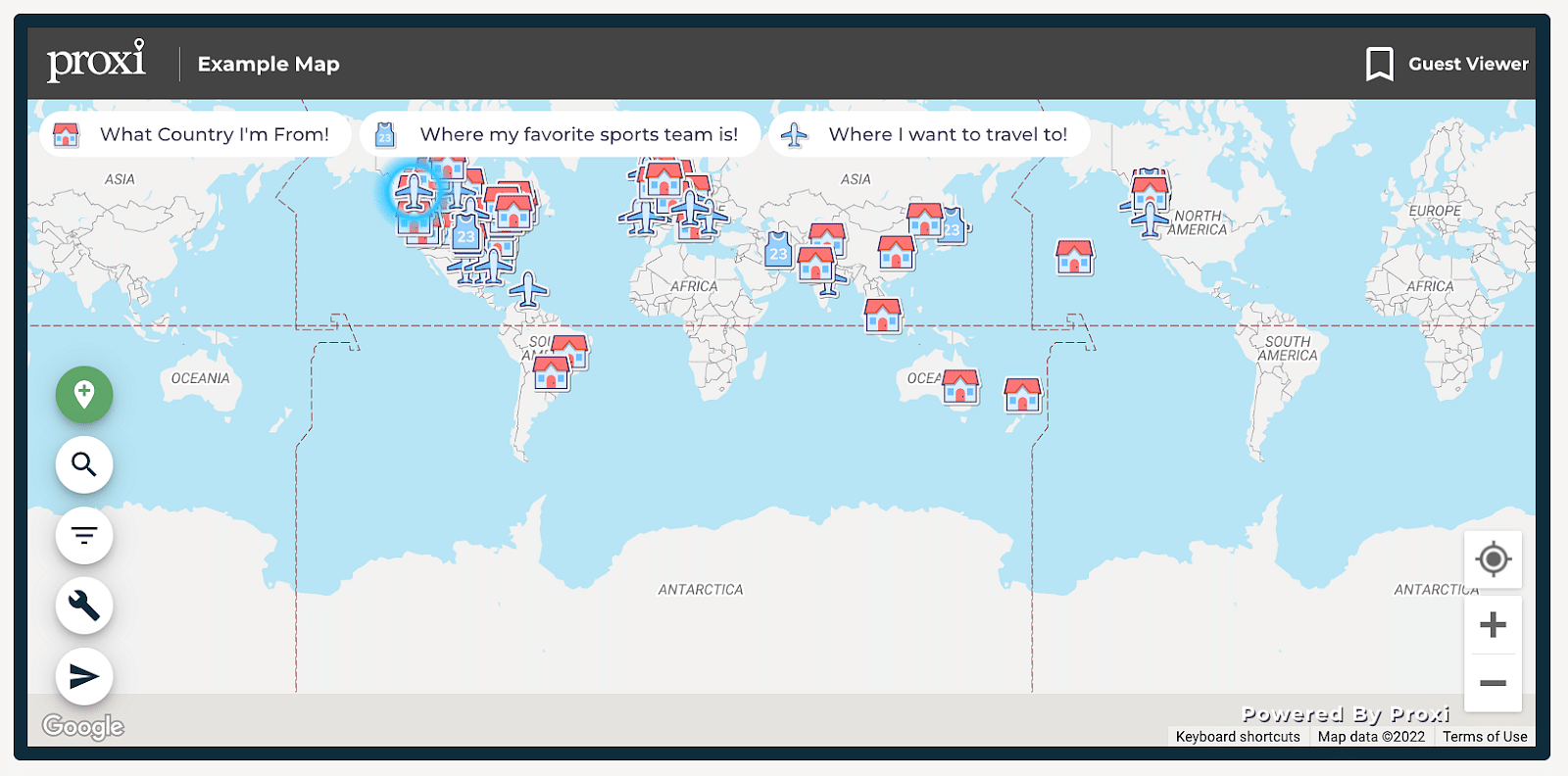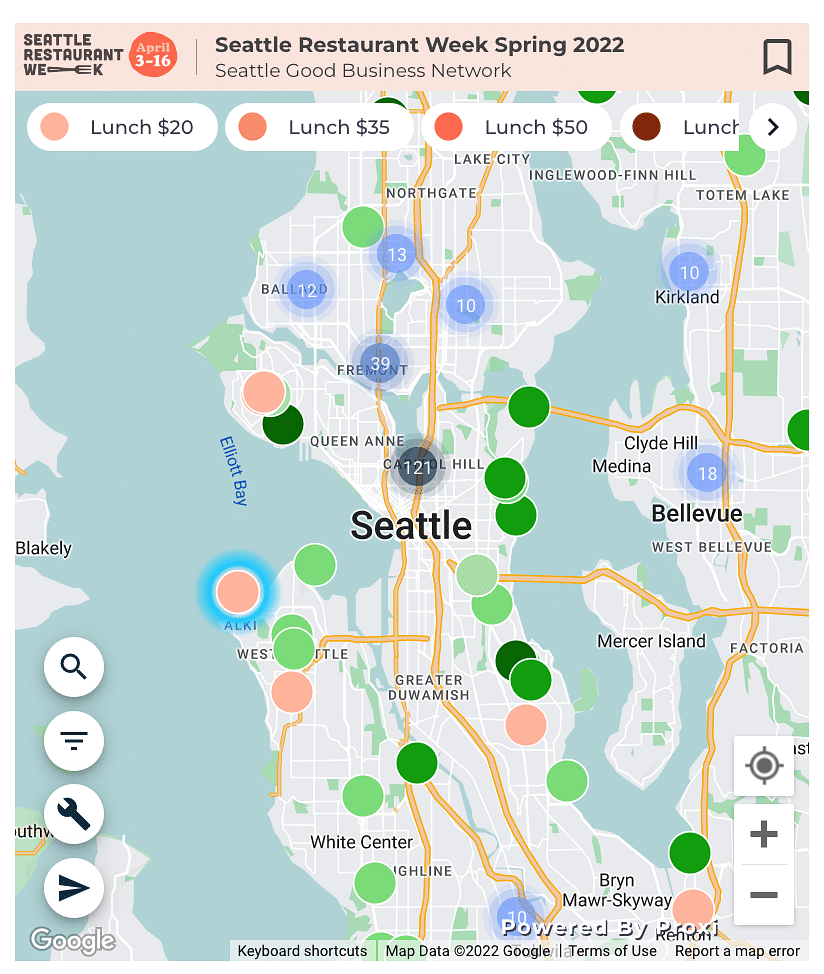
With a Proxi Map, your business can be a hero destination in your area and generate revenue from affiliate venues
By Jim James, Founder EASTWEST PR and Host of The UnNoticed Entrepreneur.
In the new episode of The UnNoticed Entrepreneur, Proxi Chief Operating Officer (COO) and Co-Founder Chelsey Roney talked about maps and how entrepreneurs can use them in their businesses to help them get noticed.
Image from LinkedIn
What Are Proxi Maps?
Proxi enables businesses to become the “hero destination” in an ecosystem of like-minded partners. It allows business owners to showcase other local businesses and recommendations in a way that helps their customers navigate the world around them, understand what's close in proximity to them — and, therefore, make decisions about where to go and what to do.
Screengrab from Proxi
On Proxi, you can create a custom brandable map, add location points to it, and share it in a matter of minutes. The platform is simple to use and you can create it to display local recommendations in your ecosystem. For instance, if you’re a manager of a tourism organisation, you can add businesses in your area that guests in your city may want to go to.
You can also embed the Proxi Map you’ve created on your website or have it printed as a quick response (QR) code for guests to access. Once your guests have a Proxi Map on their phones, it will pinpoint where they are exactly amongst the local recommendations you’ve added to the map. This allows them to understand how proximal they are to those locations and helps them get there easily.
Proxi vs Google, Apple Maps
The current go-to maps for people today are Google My Maps and Apple Maps. But Proxi is different in several ways. The first of which is customisation and branding.
In your Proxi Map, you can add your logo and customise different categories (e.g. restaurant, cafe, accommodation) and various icons to symbolise those categories. You can also brand the map background. In essence, the map can look like an in-house experience for your customers.
Another difference is that it allows crowdsourcing. You can engage with your audience and ask them to add points to your map.
The final point of differentiation is analytics.
As a business owner, you need to know the conversion rates of your map’s users. Through their Insights tool, you can better understand how many people actually went to those places that you recommended. This then helps you build relationships with those businesses, and perhaps monetise your map as well.
A Potential Source of Revenue
Monetisation is vital when a business is building relationships with other local businesses. The same is true if you’re a content creator who wants to have relationships with local establishments.
Image from Unsplash
If you want to monetise the recommendations you’ve featured on your map, you have to first understand how many people actually go to the destinations that you added.
As a Proxi Map creator, you can see how many people clicked on each map point upon publishing your map; with that, you’ll be able to provide data to those local businesses. You can show that you have this amount of views or that number of conversions on a certain map point, and leverage those to propose an affiliate partnership with the business concerned. For instance, you can get a special discount code and do revenue-sharing.
Currently, Proxi is able to provide map creators with information on how many users clicked on a map point. Soon, they will be able to give information on how many of those people actually went to that destination based on the location information that they receive.
For privacy purposes, the information that they will provide would be aggregated. Your affiliate partners can know how many individuals went to their place — and not the exact names of those who visited their establishment.
On Map Points and Scaling
For your map to be valuable, you have to have at least five location points. If you create a Proxi Map, you’ll want to at least put about that many points to make it compelling enough for people to come back to your map time and time again as they’re navigating a destination.
Screengrab from Proxi
Proxi has also made it easy to make geography entirely scalable.
If you’re hosting a conference in a large hotel, you will want to have the map scale to be very zoomed-in because most people will be on foot and you’ll want to provide recommendations within a few blocks’ radius. But if you’re visiting a different country, you may want to zoom out to a larger area.
The Intentional Lack of Review Section
Though you can feature local businesses on your map, Proxi is not providing a comments or review section for those places. They believe that reviews and comments can be stale. And there’s a huge moderation component that needs to be in place to manage that aspect of a business.
They consider the lack of such a section another differentiator from other platforms like Google and Yelp. When you come to Proxi, you’re seeking out maps based on the map creator and you’re trusting that creator’s recommendations. Consider it as the company’s unique take on trust — it’s put on the map creator rather than other people’s reviews.
This also gives a lot of peace of mind to people (especially those travelling to places that they haven’t been before) because they won’t be encountering fake reviews.
Image from Unsplash
For the Casual Cartographers
Proxi brands itself as the technology for “casual cartographers.” You don’t have to be a developer or a computer savant to make a Proxi Map. You simply need to go to their website, click on the “Create a Map” button, put in your email address (where they can send you information), and the map will be created right there and then.
To embed the map, you must only click on a certain button, copy the embed code, and paste it into your website. You can also share the map through a link, which you can display anywhere you wish — on social media like your LinkedIn bio or even via text message.
Proxi is also web-first, and this is one of the values that they will continue to stand by as they move into the future. You won’t need to download a mobile app to use the platform and make maps. What they’re creating instead is an app where people can go to discover maps from many map creators across the world.
How B2Cs are Winning through Proxi
In the US, there’s a so-called “Restaurant Week,” a week-long event where an organisation in a particular city would bring restaurants together to benefit a cause.
The organisations running these events are now turning to Proxi. They’re putting themselves on the map, listing their deals, and embedding the map on their sites. Proxi has also partnered with OpenTable to allow restaurant bookings.
The hundreds of thousands of views that the maps have garnered are proof of how end-users are really enjoying understanding proximity when it comes to restaurants around them.
Screengrab from Proxi
Most of their users are business-to-consumer (B2C) players. Typically, one business — the so-called “hero destination” — will feature the ecosystem of businesses around them. Then, the businesses featured will promote the map to their customers. This allows their respective audiences to enjoy one map that showcases this whole network of businesses.
In the future, Proxi also considers adding a feature that will let people subscribe to a map creator. This way, they can see updates on a map or see other new maps that the creator has published.
Getting Proxi Noticed
The most effective way that Proxi gets noticed as a brand is through social media, where they utilise both organic posts and paid advertising. They’re currently on Twitter, Facebook, and Instagram. Soon, they will also be on Pinterest and TikTok.
They’re also working with a public relations (PR) firm to help them get their message out into the world. Additionally, they produce relevant content for search engines.
Another way that they’re getting noticed is via viral maps. Typically, these maps correspond to large events in a certain area or a holiday. Media organisations use Proxi Maps to spread the word about local events, and those tend to go viral, which, in turn, gets the word out about Proxi.
To navigate Proxi and find out more about them, visit www.proxi.co. The platform is currently free of charge, and it plans on adopting a freemium pricing model in the future. For an individual user, it will always remain free. But they will also roll out an enterprise package and they will begin charging for some advanced features.
This article is based on a transcript from my podcast The UnNoticed Entrepreneur, you can listen here.
Cover image by GeoJango Maps on Unsplash







